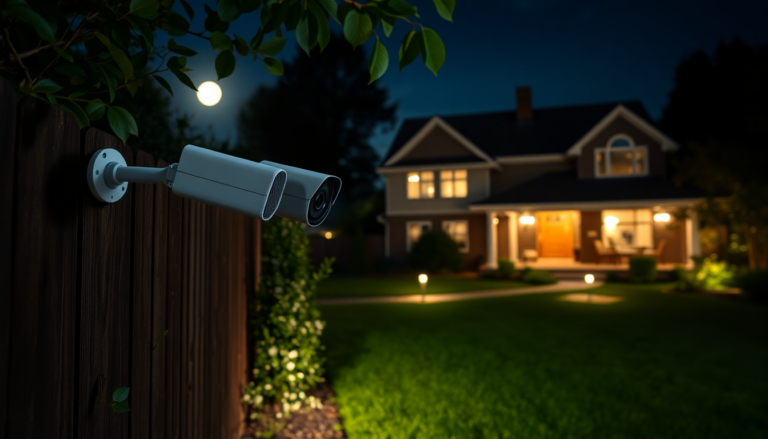Argomenti trattati
When it comes to securing your home, have you ever thought about the role of night vision technology in your security cameras? It might surprise you, but while most property crimes happen during the day, nighttime poses its own unique challenges. With reduced visibility and fewer people around, intruders can seize opportunities. That’s why having a security camera equipped with effective night vision capabilities is essential for comprehensive home protection.
Exploring Night Vision Technologies
Night vision technology in security cameras comes in several varieties, each boasting its own set of advantages and applications. The most common type is standard infrared (IR) night vision. This technology uses infrared LEDs placed near the camera lens, emitting light that’s invisible to the naked eye, allowing the camera to capture images even in total darkness.
Typically, IR night vision operates within wavelengths ranging from 750 nanometers (nm) to 1 millimeter (mm). Most cameras utilize LEDs that emit light at either 850nm or 940nm. The 850nm LEDs emit a faint red glow, making them ideal for outdoor use, while the 940nm LEDs are more discreet, perfect for indoor settings. Although IR night vision cameras are reliable and cost-effective, they do produce black-and-white images, which can sometimes obscure critical details like color or distinguishing features. Isn’t it interesting how the technology we rely on can also have its limitations?
The Perks of Full-Color Night Vision
On the flip side, full-color night vision technology employs low-light sensors and advanced image processing to retain color in dim conditions. By amplifying available light, these cameras can deliver recordings that closely mimic daytime footage. One standout option, known as starlight sensors, excels in low-light environments, often capturing clear color videos even with minimal illumination. Imagine being able to see the vibrant hues of your surroundings, even at night!
While full-color night vision proves beneficial for identifying specific details—like clothing colors or vehicle types—it does require some ambient light to operate effectively. In complete darkness, these cameras may switch to IR mode to maintain visibility. To boost performance in low-light situations, some models even come with built-in spotlights that illuminate the area when motion is detected. How cool is that?
Spotlight-Enhanced Night Vision Cameras
Taking illumination to the next level, spotlight-enhanced night vision cameras incorporate powerful floodlights into their design. These lights activate when motion is detected, providing bright, detailed footage that rivals what you’d see during the day. The main advantage here is consistency; since the camera generates its own light source, it remains operational regardless of the available ambient light. But have you considered the potential drawbacks?
The intensity of these lights can be a double-edged sword. While they offer excellent visibility, they might disturb neighbors if triggered too frequently, making them less suitable for densely populated areas. Additionally, spotlight cameras often consume more power than their IR counterparts, which is something to keep in mind if you’re relying on battery-operated devices. So, which option makes the most sense for your specific situation?
Ultimately, choosing the right night vision technology depends on the lighting conditions and specific location of your home. Standard IR night vision is perfect for discreet indoor monitoring or low-activity areas, while full-color options shine in environments with some existing light. As for spotlight-enhanced systems, they’re best suited for darker areas where clarity and detail are top priorities.
Wrapping It Up
In conclusion, the effectiveness of your home security camera significantly hinges on the type of night vision technology it utilizes. By understanding the distinctions between standard infrared, full-color, and spotlight-enhanced night vision, you can make informed choices that bolster your home’s safety and security. Matching the right technology to your environment will ensure you capture sharp, reliable footage, giving you peace of mind both day and night. Isn’t it reassuring to know that you can take control of your home security like this?

